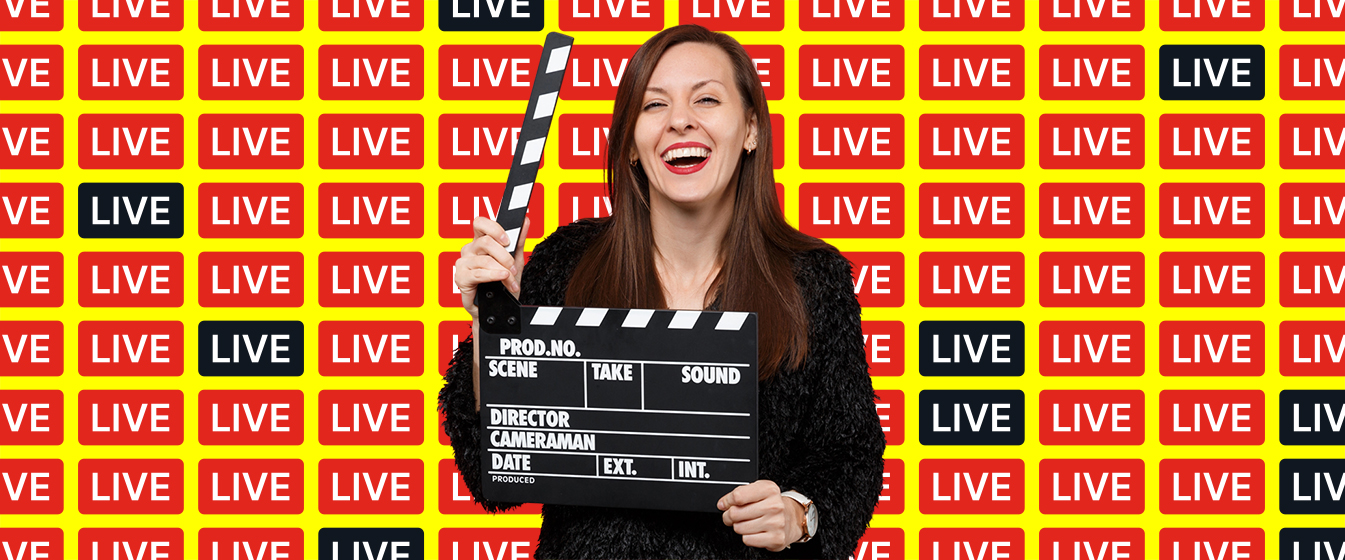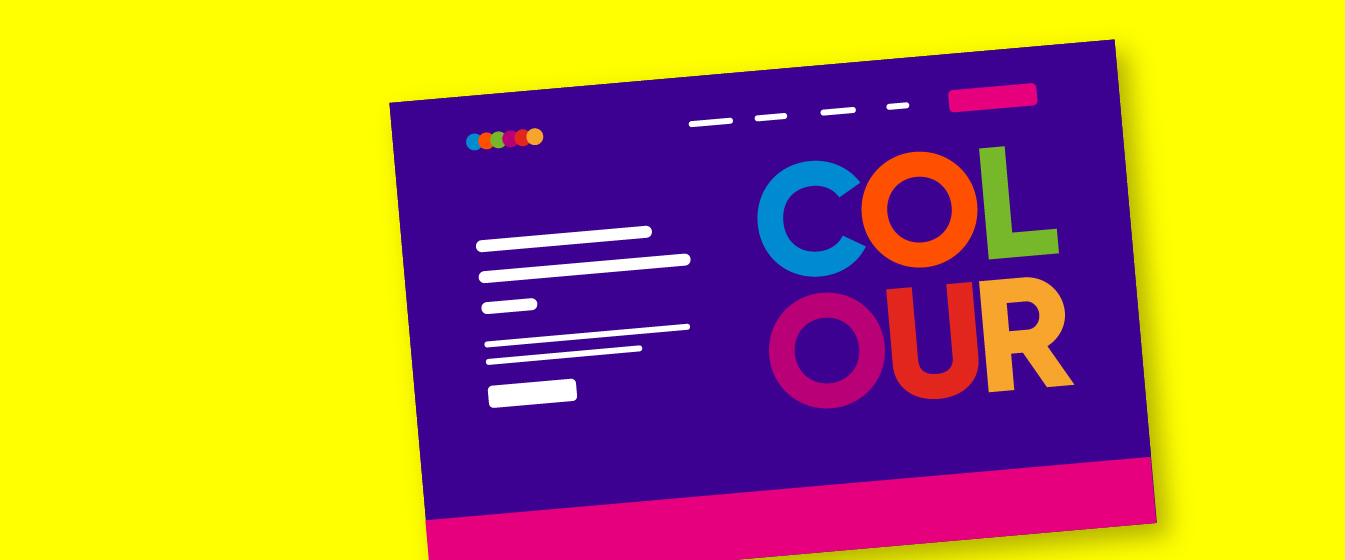Blog: Event design
How accessible are your events?
16 January 2023 minute read

In the UK 1-in-5 people are living with a disability. In the US the number is 1-in-4. So (all other things being equal) it’s possible that between 20–25% of people that attend your event will have a disability of some kind.
Disability is not always obvious. It can be hidden and it can fluctuate. Whether you are hosting an event for the general public or for industry professionals, it’s a good idea to understand how you can make your event inclusive and accessible to as many people as possible.
There are a number of factors to consider when planning and executing your accessible event. The more of these you can build into your event design from first principles, the more successful you’re going to be.
Promoting your accessible event
Of course a disabled person is looking in the same places as a non-disabled person to decide which events they want to attend. But if they get the impression your event might not be accessible, they might simply conclude it’s not worth looking any further into attending.
By stating clearly, up-front, that your event will be inclusive and accessible to disabled people, you’ll help someone with access requirements to know that they’re welcome and their needs have been factored in.
Consider adding a paragraph (or a page – depending how large the event is) to your website and programme brochure about why you are making your event inclusive, and what practical features and support are designed-in.
If you’ve hosted inclusive events before and received positive feedback from participants, sharing these reviews will support other disabled people to feel that your event will be a good experience.
Designing an accessible registration process
Ensuring that your registration process is accessible might sound obvious, but a ton of events don’t handle this properly.
Online forms can sometimes be inaccessible for people who use screen readers, have visual impairments or use the keyboard to scroll through a website. If in doubt, ask your registration platform vendor what they’ve done to test and ensure their forms and UI work for visually impaired users. WebAim have created a guide for ensuring form accessibility.
A good backup is always to offer alternative routes to registration. Having a phone number that will put a registrant in contact with the right team member will ensure anyone who is struggling to fill in a form can still register successfully.
Be sure to ask about access requirements on the registration form. This is an opportunity for your participants to tell you about any specific requirements they may have. Use conditional logic to ask if the registrant has any special access requirements and if the answer is yes, display a free text field to allow them to elaborate.
It can be hard for a person to consider the access requirements needed before understanding what will be happening, so try to be specific in describing any activities in your programme – tours, visits, demonstrations etc – especially those taking place outside of the main venue and regular meeting format.
Publishing practical information up-front
The more information that you publish about your event, the better equipped a disabled person will be when thinking about accessibility. As everyone’s requirements are different, you can’t possibly know precisely what every individual will need. Try to share information on the following key points:
- Information on accessible transport routes
- Locations of the accessible entrances
- Accessible facilities, including toilets, refreshments etc
- Timings and length of breaks
- Provision of hearing loops and sign language interpreters
- Acceptance of assistance dogs
- If food is provided, describe the type of food
Access during the event itself
Of course, ensuring accessible facilities are in place during the event itself is your top priority, and this starts with your choice of venue.
Many convention centres and hotels say they’re accessible, but the specific facilities and provisions vary enormously. It is important to get details about what they mean and it’s a good idea to ask for photographs.
Ask what actual, physical investments your venue has made to improve access, for example:
- Well-lit spaces that are easy to navigate.
- Breakout and session rooms with areas without seats, for scooters and wheelchairs, and reserved seating for people with disabilities who request to sit up front.
- Staff / volunteers to assist in locating seating.
- Restrooms with accessible power-operated entry doors, sinks with knee space underneath at 750mm / 30 inch high counters, and accessible stalls, without added scents anywhere.
- Networking areas with various table heights, including 750mm / 30 inch high chairs throughout the area, and some with armrests.
- Large screens where agenda and logistical information can be displayed.
- Baby-changing facilities that are wheelchair accessible.
- Registration desk with a lower 750mm / 30 inch high counter section.
Then there’s the question of where facilities are. Do your disabled participants have to travel across the entirety of the venue to find the accessible toilet behind two heavy doors, so that every trip to the bathroom will take 30 minutes? Are your refreshments at eye level only, so that a wheelchair user will not be able to reach for a cup of coffee?
What about the networking spaces? Are they big enough for a wheelchair user to navigate? Will you be having breakout spaces? If so, will a participant with a hearing impairment clearly be able to hear the conversation and therefore meaningfully contribute?
Being accessible doesn’t just involve being wheelchair-friendly. It’s also important to consider the needs of guests with guests with sensory needs, including neurodiverse and autistic attendees.
Venues that are sensory-friendly will have designated ‘quiet areas’ available for guests who are experiencing sensory overload. Increasingly they will also be equipped with complimentary sensory kits that include noise-cancelling headphones, fidget tools, verbal cue cards and weighted lap pads.
Coded lanyards to help staff easily identify sensory-sensitive attendees can be a great way of targeting assistance during crowded, noisy events.
US non-profit KultureCity advises events and venues on the sensory needs of attendees and has developed sensory bags filled with items that can help reduce sensory overload.
Training and awareness, on the part of both event and venue staff, is every bit as important as physical facilities. According to Paul Ralph of disabled access review website Euan’s Guide, inclusivity starts with people, not place.
‘A venue might have accessible toilets or the correct signage’, he says, ‘but if the staff don’t feel confident welcoming disabled delegates then all of that inclusivity is lost. You can tell a little about a venue on paper or online, but it’s that human interaction in the first few minutes when you come in that makes all the difference.’
‘I’ve been to conferences and staff have turned and walked away as they are unsure what to do, what to say or how to engage.’

KultureCity’s sensory bag includes includes noise-cancelling headphones, fidget tools and verbal cue cards.
Accessible catering
Event planners spend a lot time thinking about catering, especially what guests eat in terms of dietary requirements. But an often overlooked access consideration is how guests eat at an event.
Buffet lunches, for instance, need to be thought through. Paul explains:
‘I recently attended one with no tables for me to put my food on. Things like that are easily overlooked, and even when tables are provided for that purpose they don’t always feature signage to that end, and so people without disabilities will sit at the tables. Make sure you get ahead: provide additional tables or amenities with recognised signage to help people with disabilities.’
The buffet format has other challenges. One of Paul’s colleagues, John, is visually impaired. ‘John’s great challenge is that when a buffet is presented he has no idea what’s in front of him, even with labelling. The way to deal with that is to have catering staff actively engage with delegates and offer help when it’s needed.’
Other people might face different issues. Say a guest has limited dexterity in their fingers. Finger food is thus difficult and inaccessible, being too small and fiddly to pick up. If that guest knows in advance that sandwiches will be served, they can make provisions or ask the host to present the food in a way that is manageable.
This is another reason why designating a specific point of contact within your team can be incredibly helpful for guests with access needs. Having people who can provide up-to-date knowledge on the event, the venue, the facilities, and the agenda is key.
Speaker diversity
When thinking about speakers for your event, how much consideration do you give to sourcing experts that have diverse backgrounds? Not just for the sake of it, but because diverse speakers are more likely to represent the diverse backgrounds of your participants. Do you have any disabled speakers on your invite list? Depending on your event, somebody speaking from a background of lived experience – whatever that lived experience may be, will add an extra layer to your agenda.
It’s important to consider the practical needs of speakers on-site too. Can the speaker access the stage or speaking area easily? Is the lectern height adjustable? Are there monitors on stage showing the presentations / videos? Can the microphones connect to a hearing loop?
Gathering feedback
Event managers are often cautious about asking for specific feedback related to access and disability. But keep in mind, you’re only using feedback to improve your event for next time. So why not add a question at the end of your feedback form allowing anyone to give you specific information regarding how they found the accessibility of your event.
Obviously, you cannot and should not ever ask specifically if somebody is disabled. But you can ask if anyone would like to leave comments regarding the access. You can use this opportunity to gather feedback on what worked, what didn’t and perhaps to get reviews / testimonials that can help to reassure future attendees that they can expect a comfortable, welcoming experience at your events, regardless of their access needs.



